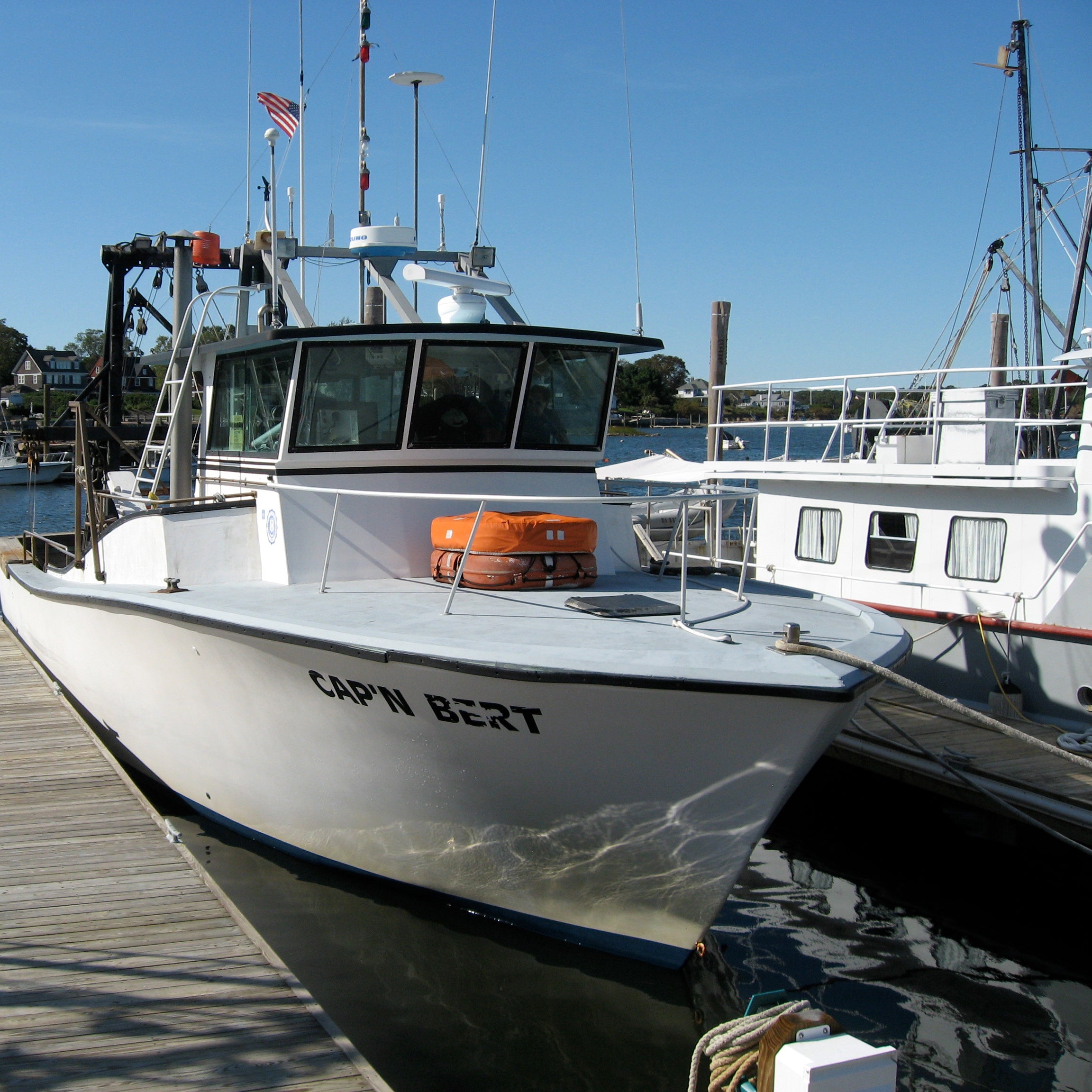KINGSTON, R.I. – May 24, 2018 – It was designed as a long-line fishing boat, but its owners used it instead to smuggle marijuana from the Caribbean to Florida. When the culprits were jailed, the Coast Guard seized the vessel and put it up for sale. The University of Rhode Island purchased it in 1986 for use as a research and education boat in Narragansett Bay and converted it into a trawler.
Now the Cap’n Bert is having its engine repowered to extend the life of the vessel and comply with U.S. Environmental Protection Agency emissions standards.
“It still had the original engine built in 1981,” said Mitch Hatzipetro, a research assistant in the URI Fisheries Center who applied for a grant from the EPA and the Rhode Island Department of Environmental Management to repower the engine. “It was a lot larger than we needed, and it was extremely old and we wanted to upgrade to a newer, cleaner, more environmentally friendly engine.”
The new engine, installed by Rhode Island Engine Co. in Point Judith, has 425 horsepower, down from the original engine’s 675 horsepower. Total cost of the project is $130,000, of which $52,000 came from grant funds.
According to the boat’s captain, Steve Barber, the Cap’n Bert is a busy vessel. In the 1980s and 90s, it was used in a two-year fisheries degree program that taught students to become commercial fishermen. Today it is more often used to take classes of marine biology and oceanography students to collect samples of water, sediment and plankton for laboratory analysis. Several fisheries classes use it as well, including a class that teaches students how to operate small boats.
“The classes all have different agendas, but they all use the Bert as a platform for their studies,” said Barber, a former commercial fisherman.
The boat also plays an important role in URI research. Since its acquisition, the vessel has conducted weekly trawls for fish in two locations in the bay to learn about the changing fish populations. It’s a project that began in 1959 and is the longest study of its kind in the world. A similar long-term study uses the Cap’n Bert to conduct weekly surveys for plankton.
“The weekly trawls give us an idea of how the bay has changed over the years due to warming waters and other factors,” Barber said.
In addition, the boat takes summer campers on the water to learn about marine life in Narragansett Bay, and it is chartered by a number of marine-related companies that use it to test their products. FarSounder, a Warwick-based company that makes sonar equipment, charters the Cap’n Bert regularly, as does Liquid Robotics, which designs and manufacturers ocean-going robots.
DEM occasionally puts the boat to work as well. It has been used to transplant shellfish from the upper bay to cleaner waters in the lower bay, for instance.
While the boat is primarily used in Narragansett Bay, its certificate of inspection from the Coast Guard allows it to travel just beyond Block Island as well. While it seldom goes that far, it was used in recent years for several studies of the Block Island Wind Farm.
“It’s a terrific and versatile boat,” said Barber. “I especially enjoy having students aboard and showing them what they can’t see or touch or feel in the classroom.”

